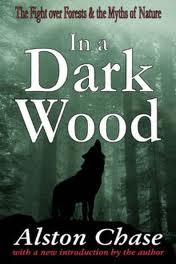
Something to think about for world environment day
Alston Chase:
To understand why the ecosystem idea is so broadly popular and so seldom questioned, we must go deeper than politics, to consider the underlying culture, or deep structure of society … Sometimes cultures become dysfunctional …
Ancient Myth #1: There is a balance of nature
Modern Corollary #1a: Ecosystems are “self regulating” and, so long as left undisturbed, maintain themselves in balance.
Modern Corollary #1b: Since ecosystems regulate themselves, leaving them alone is the best way to preserve them.
Ancient Myth #2: Nature can be “healthy” or “unhealthy”
An old notion, derived from the supposition that nature is like the human body.
Modern Corollary #2a: The goal of preservation policy should be to maintain ecosystem health, which is defined as ecosystem balance.
Ancient Myth #3: In the beginning, all was perfect.
This is the millennia old belief in a Garden of Eden or Golden Age. It has many corollaries, including:
Modern Corollary #3a: Existing species can disappear, but new ones cannot be made; hence, “biodiversity” can only decline.
Modern Corollary #3b: “Native species” are good for the environment, “exotic” species are bad for the environment
Modern Corollary #3c: Native peoples never harmed or altered the environment, but modern peoples, especially technological societies, inevitably damage it.
Modern Corollary #3d: The goal of preservation should be to “reestablish original conditions”
Ancient Myth #4: Nature is sacred
This pantheistic supposition, for centuries embraced by many cultures around the globe, was introduced to the European settlers of North America via Puritan theology, whose views of nature were, in turn, infused by German romantics and religious writers
Modern Corollary #4a: Sound environmentalism must rest on a “biocentric” point of view, not on an anthropocentric one.
– Alston Chase. In a Dark Wood: Introduction to the 2001 Transaction Edition

0 Responses to “ancient myths and their corollaries”
Leave a Reply